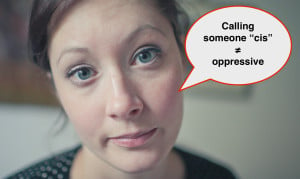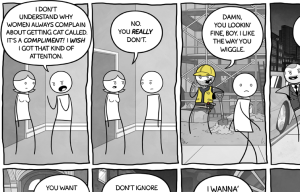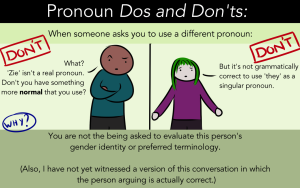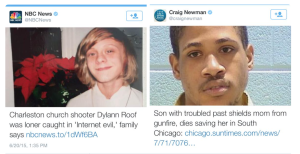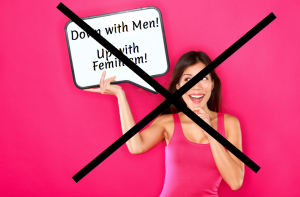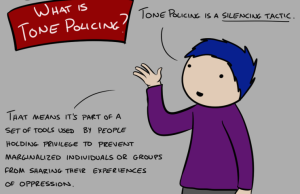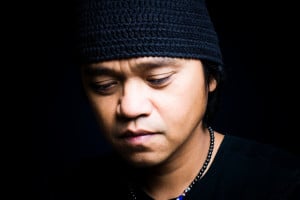
Source: Unsplash
Like most people, I grew up believing that prisons equaled safety.
According to the majority of cop shows all over television when I was a kid, only “bad guys” went to prison. The good detectives always put away the violent criminals. Sometimes it was for a few years, and sometimes it was for a lifetime.
The message was always clear: criminals did this to themselves. They deserved to be locked up. Prison walls protected the rest of us – the good, the upstanding, the lawful – from them.
But as I got older, I realized how wrong these shows were.
Because everything that I was witnessing in my neighborhood, everything I was hearing from loved ones, and everything I read from activists just didn’t match up to what I had always been taught about punitive justice.
Instead of the simple narrative of good cop vs. really bad, violent criminal, the story got way more complicated.
What Is Punitive Justice And Why Is It Oppressive?
Prisons are part of a larger system called punitive (or retributive) justice. Under this system, if someone breaks the law, they’re punished for that wrongdoing.
The punishment is supposed to be proportionate to the crime and should accomplish two things: rehabilitate the original law-breaker and stop others from committing the same crime. On paper, that looks pretty simple, and it looks fair.
In reality though, punitive justice in the United States is far from being simple or being fair.
Our punitive justice system is inherently antiblack, racist, and classist.
Historically, the prison system and the police force in the United States were both used as tools of white supremacy. Michelle Alexander’s The New Jim Crow is one of many resources that go into details about how our so-called justice system disproportionately attacks Black people.
Nothing much has changed since these things were created. Today, the justice system relies heavily on prejudices we’ve been socialized to see as truths for generations. These prejudices, when internalized, are called “implicit biases.”
Implicit biases work against marginalized folks because we are seen as inherently dangerous — whether or not we have committed a crime, we are assumed to be guilty simply by existing.
This means that Black, Native, Latinx, LGBTQIA+, and low-income people – many of whom have more than one of these identities – are all overrepresented in the punitive justice system.
Because we’re automatically seen as criminal, law enforcement can basically do anything to us without consequence. This is why rates of police brutality, rape, and abuse are extremely high against People of Color.
This is especially true for folks who are further marginalized in our communities. For example, 58% of fatal police shootings involve a person with a mental illness. This means that the death of Tanisha Anderson – a Black woman with schizophrenia who was murdered by police – is not an isolated event.
Unfortunately, it’s all too common.
But more than that, when a crime has been committed, the punishments we receive are disproportionately harsh, particularly for non-violent crimes like drug related offenses. Wealthy white people, however, are often protected or get lesser sentencing for crimes they commit.
For example, both Jaime Arellano and Ethan Couch were Texas teenagers who killed people while driving drunk. They were charged with the same crimes. Yet while Jamie Arellano was charged as an adult and spent 20 years in prison, Ethan Couch stayed in the juvenile justice system and was only sentenced to 10 years probation and 2 years of jail time.
The punitive justice system definitely doesn’t treat everyone equitably.
And a lot of times this happens because the punitive justice system just seeks to punish someone for breaking a law, rather than looking at the reason why it was done.
This kind of system doesn’t look at how oppression and systemic violence can cause someone to break the law — nor does it look at how some laws were created to target certain people.
Many women – especially queer and trans Black women – are punished simply for protecting themselves. Often, these are women who are protecting themselves from abusive partners. In New York’s prison system alone, 67% of women incarcerated for killing a significant other had been abused by that person.
It’s not only that our punitive justice system is racist, classist, and homophobic. It’s that this system doesn’t even do what folks claim it’s supposed to do.
Going to jail just doesn’t rehabilitate people. There’s no proof that incarceration prevents crime.
And once they go to jail, so many marginalized folks continue to experience trauma. The American Civil Liberties Union has many pages explaining how the prison system often violates human rights. Abuses such as lack of medical resources, solitary confinement, debriefing policies, and rape happen too often within the system. The Attica Prison Revolt of 1971 is one of the most famous examples of incarcerated folks protesting these abuses.
In short: the United States punitive criminal justice system is inherently violent and it just doesn’t work. INCITE!’s Critical Resistance Statement speaks to all of this.
But Don’t Some People Deserve To Be Punished?
I know what you’re thinking: Yeah, okay, this is all well and good, but not everyone who goes to prison is there because of racism. There are literally serial killers and rapists behind bars. And they deserve to be in there forever.
Cards on the table: This is something I’m struggling with, and might always struggle with.
As I was editing, I talked to my brother about how I believe in prison abolition and that there have to be better ways to justice. I also shared with him that, deep down, I also believe that some people just deserve to be locked up, away from everyone else.
He said, “I agree. I know the whole thing is racist, but I also think programs that you’re talking about are great. They work for 95% of people. You know, those people who just made a mistake or turned towards gangs and stuff because there was no other option. I get it. But for the rest… They should be far away from the rest of us. Like… child abusers. If you harm children you deserve to be put away.”
I looked at him and wondered if he was thinking about our father. I know I was.
Because I don’t believe in his redemption; over twenty years of abuse has taught me that. I want to see him pay for what he’s done.
Did this make me a hypocrite? I’m not sure. Maybe.
In her book, Angels with Dirty Faces, Walidah Imarisha wrestles with this issue as well. Connecting all of these questions to her own experiences as a survivor of sexual assault, she asks, “How do those of us who are marginalized… balance or desire to keep safe, honored, and centered with our belief in systems outside of police, outside of prisons, outside of destroying those who have hurt and harmed?”
It’s an ongoing, open-ended question. I certainly don’t have all of the answers (or even most of the answers).
But I think we have to be open to possibilities.
We know that the system we have doesn’t work. It’s not that it’s broken; it was never made for true healing, caring, or justice.
It was made to dehumanize us all. And there have got to be better ways.
This is definitely not to tell any survivor of violence how to view the person who harmed them. This is not even about forgiveness. Rather, it’s about looking at the ways we can radically change our society, our communities, and ourselves when it comes to violence and justice.
It’s like Walidah explains, “We have to believe transformation is possible, or our accountability processes, and our larger visions of a new world, are doomed before they begin.”
The Important Alternative Of Transformative Justice
Like most issues, nothing is going to change unless we get to the roots of the problem. When it comes to our current justice system, that problem really boils down to oppression, violence, and a lack of healing.
Transformative justice tackles this because it “seeks to provide people who experience violence with immediate safety and long-term healing and reparations while holding people who commit violence accountable within and by their communities.”
This definition comes from the organization Generation FIVE, who developed this model based around child sexual abuse.
Transformative justice is used to respond to violence by focusing both on the individual and on the larger community.
It works so that survivors can be in control and heal while both perpetrators and the larger community are held accountable — this means the changing not only changing individual behaviors but all the conditions that allowed violence to even happen.
Transformative justice works because it always keeps people at the center. We have to examine our own “truths” when it leads to others being hurt. We have to look at what we’ve always been taught, what is never being said, and how we interact with one another.
We have to hold at our entire community responsible when someone is harmed.
Transformative justice is important because it truly does take a village to raise a child. As Maya Schenwar points out in Locked Down, Locked Out, the importance of community support is vital in transformative justice.
No alternatives to the punitive justice system will work if we’re not looking at the world through a transformative justice model.
There Are Alternatives To The Punitive Justice System
So, can our country really run without prisons?
There are so many organizations and people who are already doing the work towards proving that the answer for that is yes. Some of these efforts include finding funding for alternative programs and community oversight of police within the punitive system; others include community-controlled alternatives to police and complete prison abolition.
This is all to say that there’s not just one solution to moving away from our “crime and punishment” model, but rather many different systems we can move towards.
To quote Angela Davis in Are Prisons Obsolete?: “Rather than try to imagine one single alternative to the existing system of incarceration, we might envision an array of alternatives that will require radical transformations of many aspects of society.”
Below are just three alternatives to the punitive justice system.
1. Decriminalization and Care-Centered Policies
This is what I know: When I look around my neighborhood, I see a lot of people who are considered criminals. I see a lot of activities that are deemed illegal.
This is what I understand: When I look around my neighborhood, I see a lot of people just trying to live. I see a lot of activities that are done both for survival and for fun. I see community.
But what the state sees are people actively defying it. What the police see are people disobeying. This is why decriminalization of actions that mostly target marginalized people – like sex work, drug-related offenses, and “broken windows” crimes – is so important.
Decriminalization can work to reduce stigma and violence against members of our community. It helps us to rethink some of those prejudices that we internalized against others.
It would also help us to create new polices that are focused on care.
We need to think about the environments and situations that might cause crime, rather than focusing on crime as inherently wrong. We need to implement programs and policies of support around people rather than “maintaining order.”
Focusing on why someone does something – why they feel like they had to do something – makes it easier to come from a place of empathy rather than punishment.
Care-centered policies focus both on the individual and on larger communities. It tells us to focus on the whole story.
For example: If someone steals from a grocery store because they’re living in poverty and have to feed their family, why should they be punished? Why shouldn’t we look at how things can change so that no one has to steal food?
2. Community-Controlled Justice Systems
I immediately tense up when I see cops standing guard at my local train station. When I see them patrolling around my building, I keep my head down and try to make myself smaller.
I know I’m not the only one. The local domino players, hookah smokers, and music blasters are nowhere to be seen when the cops come by.
It’s like all the vibrancy has been sucked out of the block.
Most police officers that patrol communities don’t even come from those communities. Instead of understanding the specific cultures of the neighborhoods they patrol, they come in as disciplinarians.
This is a part of the reason why low-income People of Color are so brutalized by police –there’s no kind of cultural sensitivity training, no understanding of the environment and history, and biases against neighborhoods and peoples.
They respond to what they think is wrongdoing without understanding it beyond, “you’re breaking the law.”
Having a justice system that is community-controlled can change that. While we all carry our own prejudices – especially internalized discrimination, like misogyny and colorism – communities should be responsible for looking after themselves.
Again, using the ideas of transformative justice, with community-controlled systems, we would be able to determine for ourselves what is harmful (or criminal) behavior.
It would create systems where all members of a neighborhood would be accountable for each other and look out for one another. It could also highlight the specific issues of a community and affirm new values that will be revolutionary for everyone.
3. Restorative Justice Programs
If you work in schools or with young people, chances are you might have heard of restorative justice.
Restorative justice programs are ones that focus more on repairing the relationship between someone who committed a crime and those that they hurt. It focuses more on processing what harm was done and how everyone involved can work together to fix it. It allows the victim to have a say in the justice process and gain answers about why a harm was done.
Common examples of restorative justice programs include mediation practices and healing circles. Many schools across the country use restorative justice programs instead of punitive justice – that’s how we know they can work really well.
Instead of having policies that end in a student ending up in detention, being suspended, or straight-up expelled, teachers and administrators work with students to understand the root of the issue. It asks why a student might break a school rule, hold that student accountable for what they’ve done, and promote conversations amongst everyone in the school community.
They center the needs and experiences of students as social and emotional people, rather than just as rule-breakers.
Studies show that schools that use restorative justice programs instead of punitive justice have higher numbers of community engagement, graduation rates, and non-violent student conflicts.
We just have to think of how restorative justice could work on a larger scale. If it’s successful in schools, why can’t it work in entire neighborhoods?
Restorative justice can be painful for people who have experienced violence. It also will not work if the assaulter isn’t open and willing to change. But if we use it with transformative justice teachings, it could work incredibly well.
It could lead to us all being vulnerable and accountable for what happens, without re-traumamtizing survivors.
***
In the roundtable conversation, Police + Prisons Don’t Keep Us Safe – We Keep Each Other Safe, CeCe McDonald said this:
“Prisons don’t help, the cops don’t help, none of this is actually helping our communities… Once we can figure out how to utilize our resources and our tools to build up each other and build up our communities, then that will be the thing that will keep us safe. We keep each other safe, you know what I’m saying?”
And in short, this is what I’m saying too.
True, transformative change isn’t going to be easy. There are always differences between what we theorize and what happens in real life. As Kiyomi Fujikawa said at INCITE’s 2015 Color of Violence conference, “we’re doing a disservice to survivors” by pretending everything will always feel good and will always be okay.
But this doesn’t mean we aren’t obligated to change things anyway.
Our current punitive justice system doesn’t care about anyone as full people. We cannot let this continue on.
We have to rethink what justice can be. We have to start looking at ourselves from a place of healing and care.
[do_widget id=’text-101′]
Jennifer Loubriel is a Contributing Writer for Everyday Feminism and a mixed race Afro-Puerto Rican from the Bronx. She is also a queer mujerista and child abuse survivor. She earned her B.A. from Oberlin College in Religion and English, and identifies as an amateur Latinx ethicist and a speculative fiction enthusiast. She is a co-founder and moderator over at the Tumblr Women of Color, in Solidarity, a safe space for and by women of color. You can usually find her writing about apocalypse and diaspora, rewatching her favorite TV shows, or taking selfies with her family’s cat.
Search our 3000+ articles!
Read our articles about:
Our online racial justice training
Used by hundreds of universities, non-profits, and businesses.
Click to learn more





